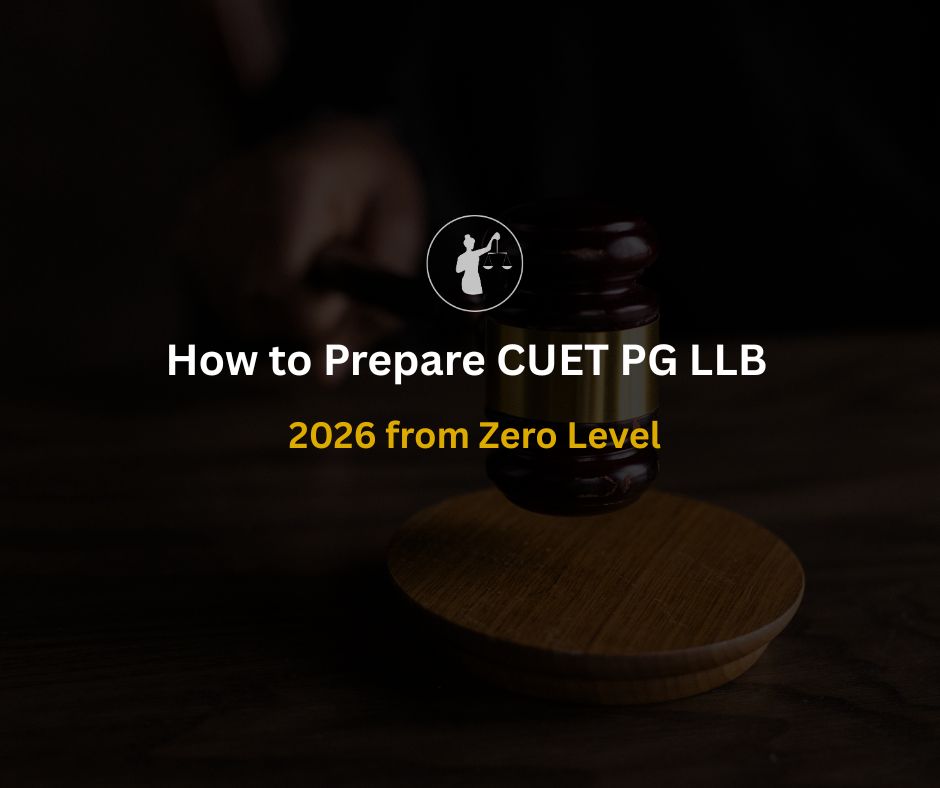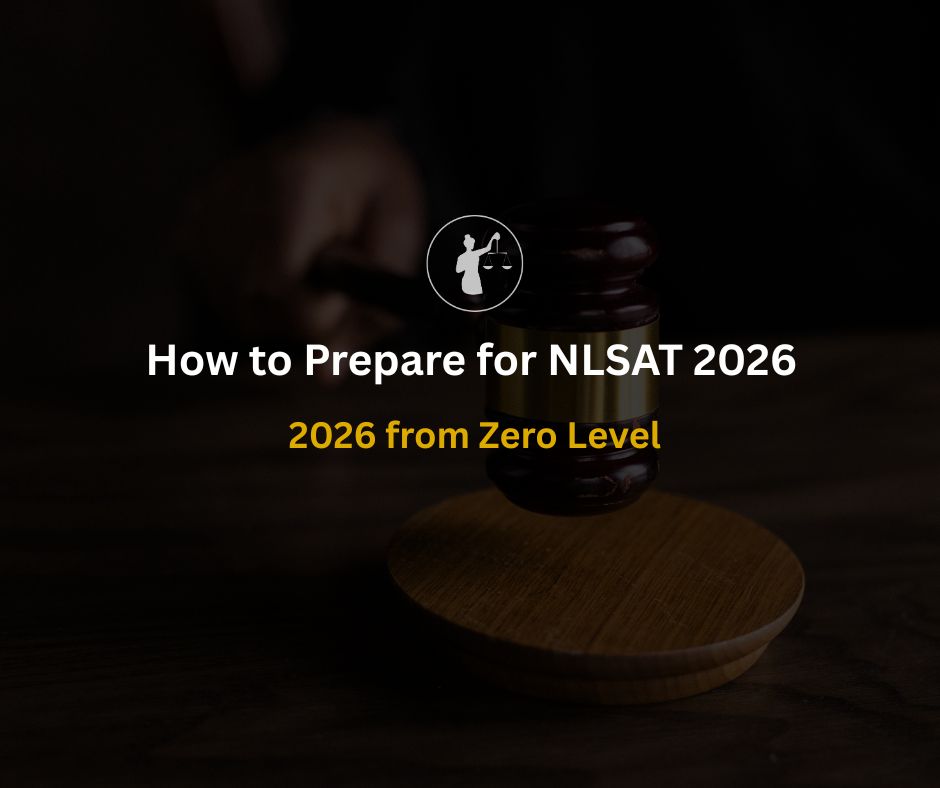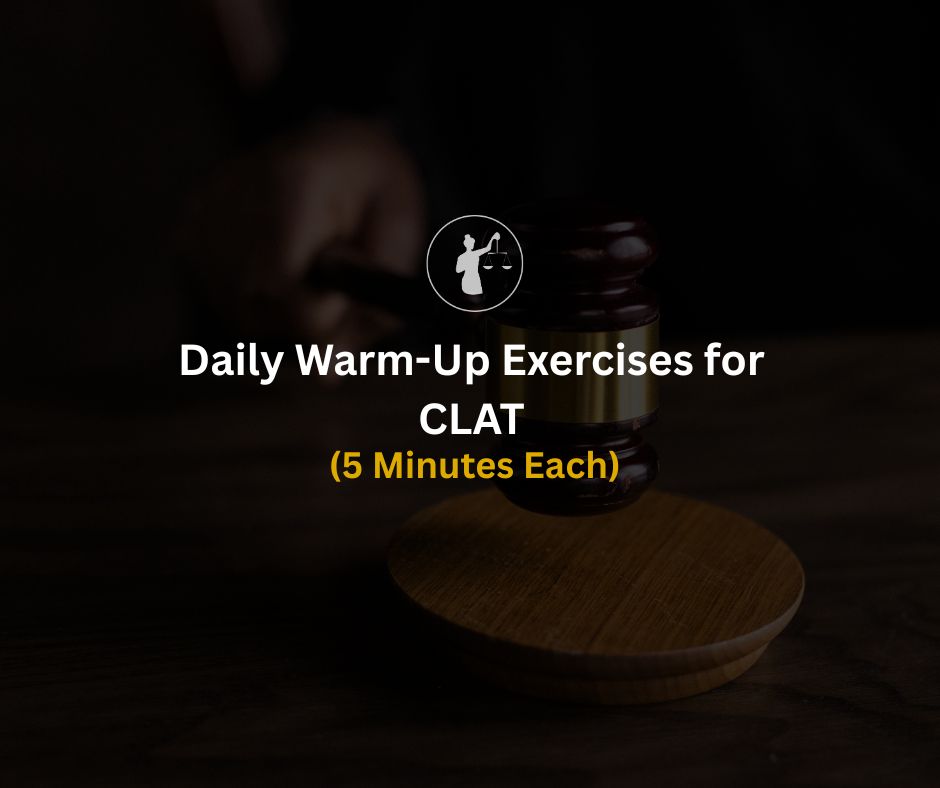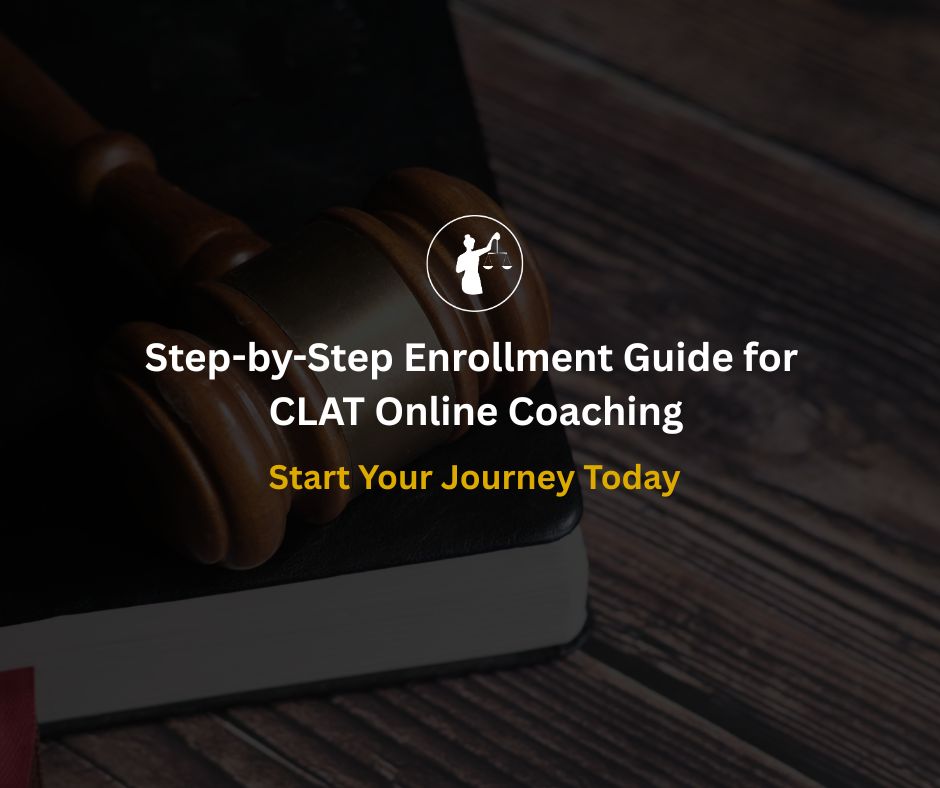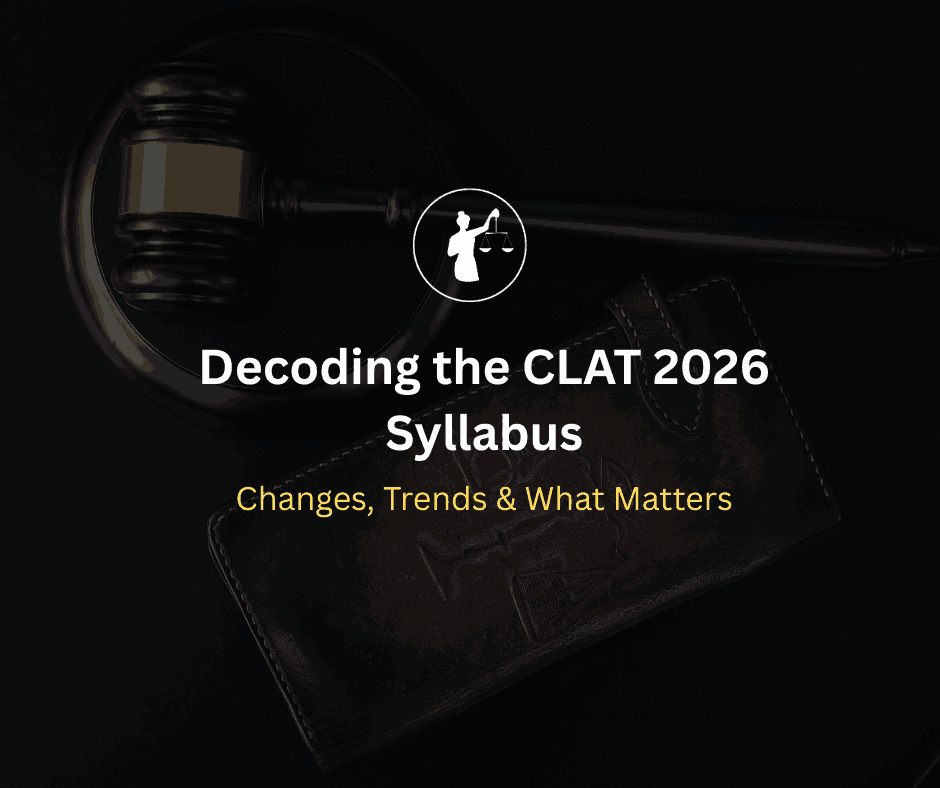
Summary: This blog breaks down the updated CLAT 2026 syllabus, highlighting key changes, weightage shifts, and evolving trends across all five sections. It offers clear, section-wise insights to help aspirants prioritize smartly and align their prep strategy with what truly matters.
CLAT 2026 retains the five-section format: English, Current Affairs & GK, Legal Reasoning, Logical Reasoning, and Quantitative Techniques. The total number of questions is fixed at 120, with 1 mark per correct answer and –0.25 for each wrong answer. There have been no reductions or removals of sections since last year.
Legal reasoning moves beyond basic fact-based principles to application-based, case law–oriented questions. Expect questions on data privacy, AI regulation, environmental law, and legal ethics.
Logical Reasoning increasingly tests paired arguments, assumptions, and multi-layered deduction embedded within passages rather than standalone puzzles.
The English section may reintroduce grammar and sentence correction questions alongside vocabulary in context.
Current Affairs now includes legal developments, court judgments, and key Supreme Court rulings in addition to national/international events.
Read More: CLAT 2026: 60-Day Smart Revision Plan for Success
English Language (20 percent weightage)
22–26 questions from 3–4 passages (~450 words each)
Test points: main idea, tone, inference, vocabulary, grammar
Sentence correction may reappear
Current Affairs & General Knowledge (25 percent)
28–32 questions set as comprehension-based MCQs
Based on recent news and static GK sources
Emphasis on:
Legal and constitutional developments
Global treaties
Awards
Cultural events
Legal Reasoning (25 percent)
28–32 questions from short legal passages
Focus areas:
Ethical dilemmas
Torts and Contracts
Constitutional law
Data privacy
Environment statutes
Logical Reasoning (20 percent)
22–26 questions testing:
Critical reasoning
Analytical patterns
Inference spotting
Argument evaluation
Syllogisms
Multi-layered puzzles
Quantitative Techniques (10 percent)
10–14 questions from arithmetic, DI, and basic algebra
Important topics:
Percentages
Profit-loss
Ratios
Time-speed-work
Averages
Number systems
Graph interpretation
Read More: CLAT 2026 Beginner's Roadmap: 30-Day Study Plan Guide
Legal Reasoning: From theory to modern application
CLAT now expects aspirants to connect principles with contemporary issues, not merely recall rules. Case-based legal reasoning, ethical judgment, and applying constitutional norms matter more than rote learning.
RC and Logical Reasoning: Longer passages, deeper thinking
Extracting logic under time pressure is crucial. Speed alone isn’t enough. Interpretive reading and multi-step analysis differentiate top scorers.
GK: From memorisation to legal context
Static GK still matters, but legal news, Supreme Court orders, and landmark verdicts now carry higher weight. Current law-based events help answer questions rooted in legal reasoning too.
English: More depth, not just words
Grammar questions could reappear, but reading comprehension remains a priority.
Precision in vocabulary, tone detection, and inference helps across all sections.
Read More: CLAT and AILET 2026 Clash: Key Updates for Aspirants
Read daily legal developments from reliable legal news portals
Solve case-based legal reasoning daily and log mistakes about principle application
Practice long-form RCs and paired reasoning questions under timed conditions
Build static GK summaries using mind maps and revisit them weekly
Drill quant basics and DI sets with timed practice for speed and accuracy
The syllabus might not seem too different on the surface, but slight changes in weightage can majorly shift your timetable. For instance:
GK is becoming more current-heavy, so daily news analysis now matters more than static memorization.
Legal reasoning continues to demand newspaper reading, but the focus has shifted to application, not just recognition of principles.
Quantitative Techniques is low in weightage, but ignoring it completely is risky. 10 marks can be a make-or-break.
Critical Reasoning in English and Logical Reasoning overlap, so time spent on inference-based RCs can boost two sections at once.
What to do:
Rebalance your prep plan. If you’re giving equal time to all five sections, you’re probably doing it wrong.
Prioritize high-weightage and high-accuracy topics.
Use mock tests to test your new routine and revise it weekly based on outcomes.
Read More: Why Join a Free CLAT 2026 Batch? Must-Know Benefits
Old PDFs or notes based solely on CLAT 2024 or earlier
Excessive CAT-level math drills. Quant is simple at CLAT, not complex
Random YouTube content. Prioritize structured sources reflecting expected changes
Grammar decks alone. Contextual vocab and tone matter more now
CLAT 2026 continues with five key sections and 120 marks
Legal Reasoning and Current Affairs are now more analytical and law-oriented
Logical and English sections demand deeper inference and reading under pressure
Quant remains basic but tests precision and speed
Consistent trend: comprehension and context over rote content
Read More: CLAT 2026 Syllabus Covered in Free FALCON Batch
CLAT 2026 is shifting from memory-based questions to contextual legal aptitude and analytical reasoning.
Your preparation must reflect that change. Focus on real-world legal issues, multi-layered comprehension, accurate grammar use, and modern GK. Consistent practice using mock tests that mirror this latest format is critical.
If you want help aligning your prep with these syllabus changes, NLTI’s structured study plans and mentor support can make a difference:
Weekly legal current affairs sheets
Mock test reviews with analysis
Real-time doubt-solving from mentors
Monthly revision schedules and goal-based tracking
Free YouTube classes and guidance sessions
Regular newsletters with syllabus updates
All designed to help you prepare for how CLAT 2026 will actually test you.
1. Is the CLAT 2026 syllabus officially changed?
No official changes have been announced, but evolving paper trends suggest a shift in weightage and approach, especially in the legal and English sections.
2. How many passages are expected in the English Language section?
You can expect 5–6 passages, each followed by 5–6 inferential and vocabulary-based questions.
3. Is grammar still tested in CLAT English?
Not directly. However, comprehension passages often require a good grasp of grammar for inference-based questions and sentence structure.
4. Does the CLAT test Static GK anymore?
CLAT now focuses more on contemporary current affairs, though basic static knowledge linked to current events still matters.
5. What kind of current affairs are most important for CLAT 2026?
Priority topics include international relations, Supreme Court judgments, government schemes, and major economic and environmental issues.
6. How should I prepare for CLAT Quantitative Techniques with weak math?
Focus on mastering basic percentages, ratios, averages, and graphs. You can score well even if you’re not from a math background.
7. Are landmark cases still asked in the Legal Reasoning section?
Yes, especially recent judgments with social or constitutional significance. However, you won’t need prior legal knowledge to solve them.
8. Can I skip the legal section if I’m weak at it?
No. Legal reasoning holds 25% weightage. Even basic practice can lead to significant gains because most questions follow a pattern.
9. What is the ideal time division across CLAT sections?
Many toppers follow this split: English – 25 mins, Legal – 35 mins, GK – 10–12 mins, Logical – 30 mins, Quant – 15–18 mins. Adjust based on your strengths.
10. Do logical reasoning questions repeat concepts across sections?
Yes. Critical reasoning skills overlap with English and legal sections, especially in assumption, inference, and conclusion-based questions.
11. How can I track changes in the CLAT pattern or trends?
Analyze the last 3 years' question papers in depth. Watch for changes in passage tone, question framing, and section balance.
12. Is vocabulary still important in CLAT 2026?
Yes. You need strong contextual vocabulary for English comprehension, legal principles, and even logical reasoning to grasp question intent.
13. Do mocks follow the actual CLAT difficulty level?
Not always. Some are tougher for practice. Always compare mock performance with official past-year papers to set realistic benchmarks.
14. Is one year enough to complete the CLAT syllabus?
Yes, if you’re consistent. A well-paced 10–11 month schedule with daily reading, sectional drills, and mocks can cover the entire syllabus.
15. Does NLTI’s approach align with CLAT’s syllabus shifts?
Yes. NLTI tailors its materials and mocks to reflect the most recent CLAT trends, focusing on deep comprehension, time efficiency, and real-world context.
